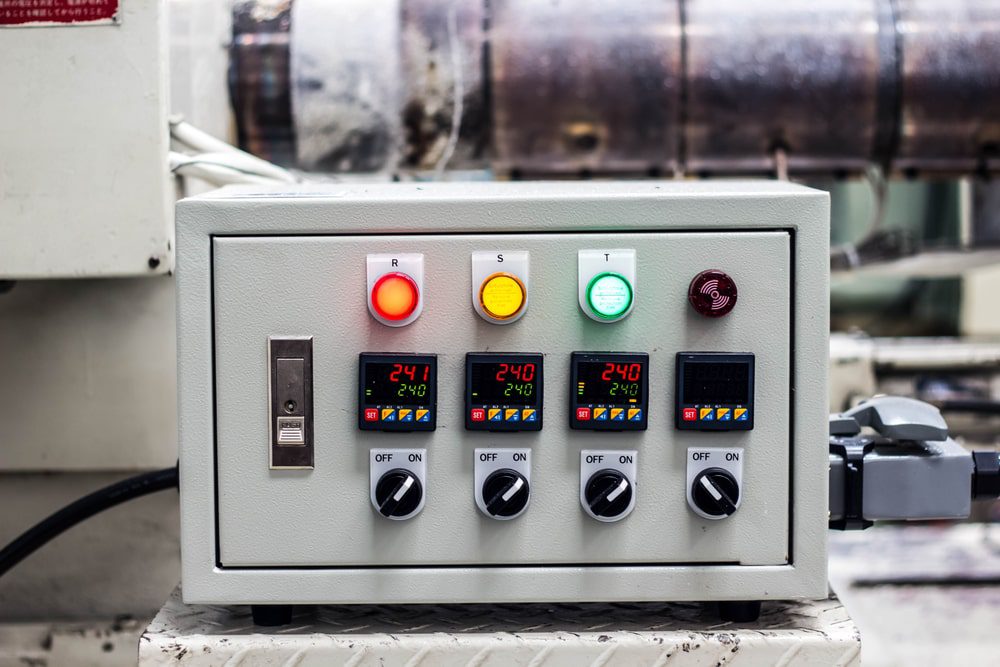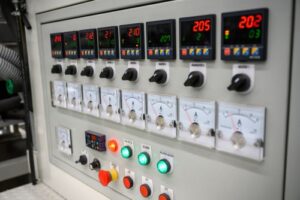If you own any type of kitchen appliance, then it is important to know that it comes equipped with a temperature controller. Temperature controllers play an important role in keeping a wide range of appliances and other systems from overheating. There are various types of temperature controllers that are used to keep both your home and most businesses running.
What Are Temperature Controllers?
Temperature controllers are devices that are used to adjust and regulate how warm or cool an appliance is to ensure that its temperature stays within an acceptable range. Although changing the temperature of an appliance or other device seems as simple as turning a knob or pressing a button, understanding the science behind how temperature controllers work to quickly and accurately bring the temperature of a room or appliance can make it easier to determine how to fix any problem with a temperature controller before it causes problems for your home or business.
Where Are Temperature Controllers Used?
Various types of temperature controllers have dozens of uses in both private homes and a wide range of industries. They can be used to regulate the temperature of high-powered ovens in a hotel kitchen or the boiler in your home. Here are some of the most common places temperature controllers are frequently used:
Private Home Use
Temperature controllers are often used to heat and cool your home itself, and can also be found in several other common household appliances. Your heating and cooling systems, such as your air conditioner, are the most significant temperature-related aspects of your home. Smaller temperature controllers can also be found throughout your home in your oven, microwave, refrigerator, water heater, sinks, washing machine, dryer, dishwasher, and other appliances that rely on being kept at a specific temperature to function properly.
Industrial Use
Temperature controllers that are much larger can also have important industrial uses. For example, various types of temperature controllers are frequently found in the healthcare, food service, packaging, and plastics industries. Certain types of temperature controllers are needed to heat seal packages, temporarily making the plastic pliable enough to mold into a wide variety of products, to help keep food and drinks within a safe temperature range until they are sold or prepared. Temperature controllers also keep food preparation appliances working properly, and preserve laboratory samples in the healthcare field.
The temperature that is needed for each of these processes falls into a very specific range that must be regulated to prevent melted or burned plastic, spoiled food, unusable lab samples, and other major concerns. For this reason, making sure that your temperature controller is working properly is essential in any of these industries to prevent wasted time and materials.
Types of Temperature Controllers
There are several types of temperature controllers available. Analog, limit, and general purpose controllers are among the most common for in-home use and in most industries. Here is what each temperature controller is used for:
Analog
Analog controllers are the most basic type of temperature controller and are generally among the least expensive options out there. Yet, they are versatile enough to function in a wide range of environments. However, they are not easy to read and have few other extra features, which limits their overall functionality.
Limit
Limit controllers cannot control temperature on their own, but they are frequently used alongside another control loop to improve the overall level of safety of the temperature controller. For example, a limit can automatically shut off a device if it exceeds the temperature it has been programmed to consider safe. This type of temperature controller can help to prevent fires, damaged materials, and other major problems caused by temperature issues, but it can only get the temperature moving by shutting the device off and cannot reset its temperature.
General Purpose
General purpose controllers are more complex and are used in most industries. With their ability to communicate and a wider variety of other features, general purpose temperature controllers are the best option for most types of industrial uses than their analog counterparts.
How Do Temperature Controllers Work?
Although the operations of your particular device largely depend on the specific function it is intended to provide, most types of temperature controllers of any size contain similar parts and work similarly. Here are some of the most important parts that make up the majority of temperature controllers and how they work:
Inputs and Outputs
Temperature controllers are primarily made from various types of inputs and outputs. The input is a type of sensor that determines when the temperature needs to be changed, and the output responds to the input and makes the necessary temperature change occur. Inputs may be activated when a person physically adjusts the temperature of a device, or they can be signaled to adjust themselves automatically. Outputs may involve automatic adjustments, or they may be programmed to turn on an alarm or other warning system, to let a person know that the device needs attention.
Some of the most common types of input sensors include thermocouples, resistive thermal devices (RTDs), and linear inputs of varying voltages. Common types of outputs include relay outputs, linear analog outputs, solid state relay (SSR) drivers, and triacs. Each temperature controller contains at least one type of input and output that work together to keep the temperature within a specified range. Some of the most complex devices that have the highest level of reliance on temperature may come with one or more backup input and output to help keep the device functioning properly if one fails.
Other Parameters
Several other parameters also play important roles in keeping a particular appliance at a set temperature level, including a setpoint temperature and an alarm value. The setpoint is the target temperature that the device has been set to, and is exactly what the temperature controller works to keep the device’s temperature close to. The alarm value is the highest or lowest temperature that is acceptable before the device activates an alarm to let the owner know it needs attention and potentially repairs.
Additional Features Temperature Controllers May Include
Temperature controllers may also include several types of additional features that improve their overall functionality. Some of these features can include temperature displays, web servers, timers, profile programming, and logic functions. These features improve the device’s ability to maintain a temperature within a very fine range, and communicate with its owner to keep them informed on how well the temperature is staying within the target range and when repairs may be needed.
At Lindberg Process Equipment, we prioritize helping our customers determine which devices are the best fit for them. Contact us today to learn more about choosing the right temperature controller for your home or business.






